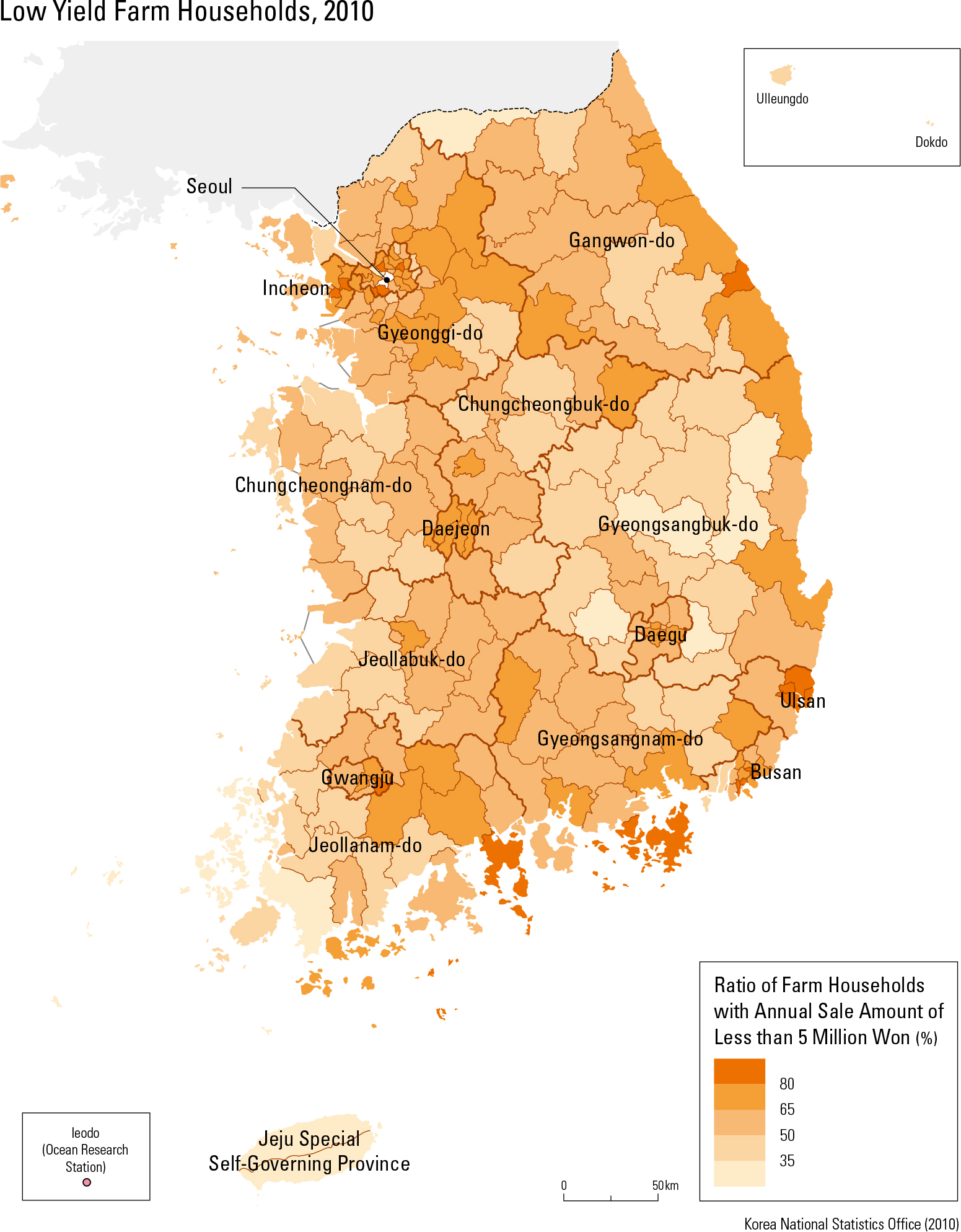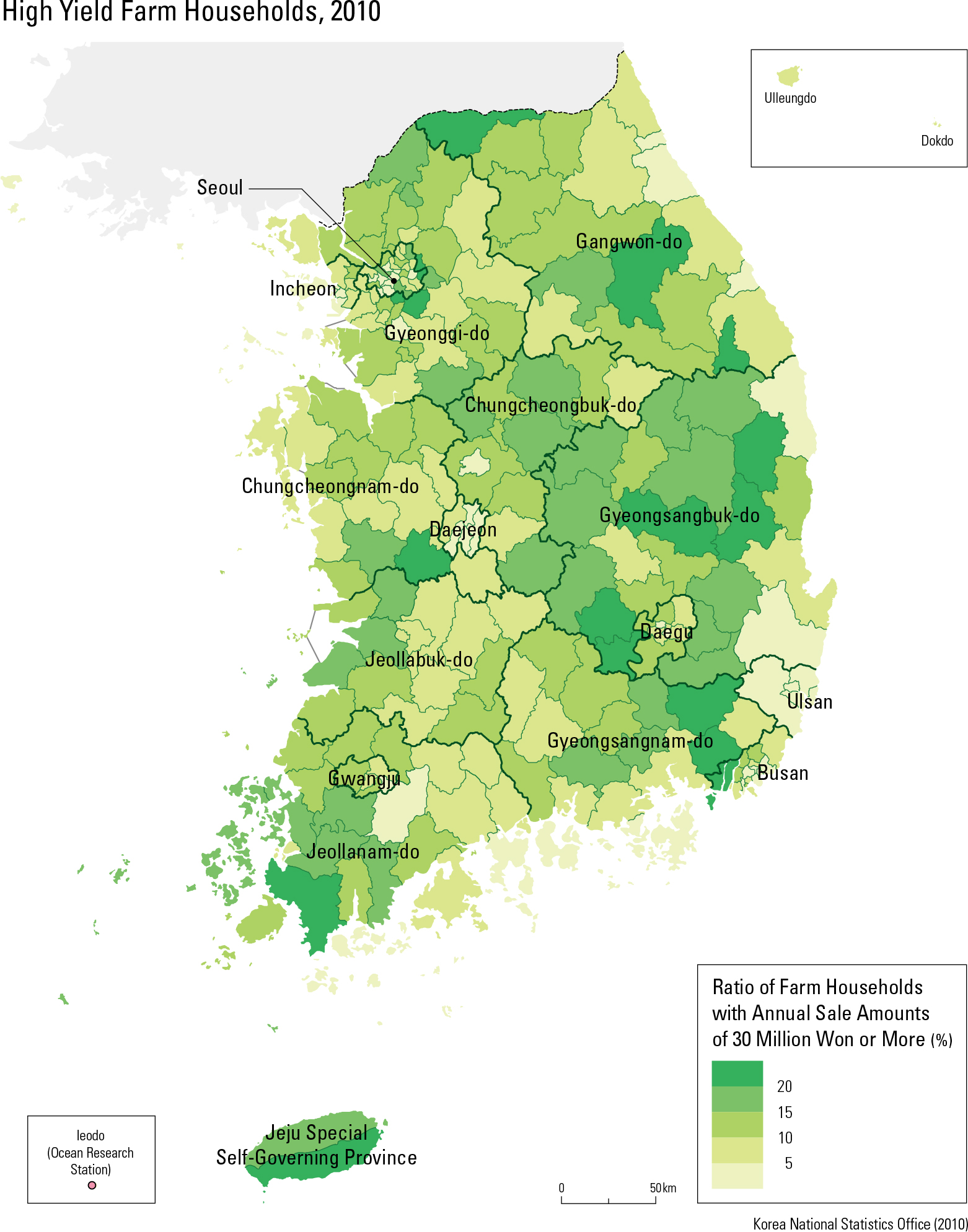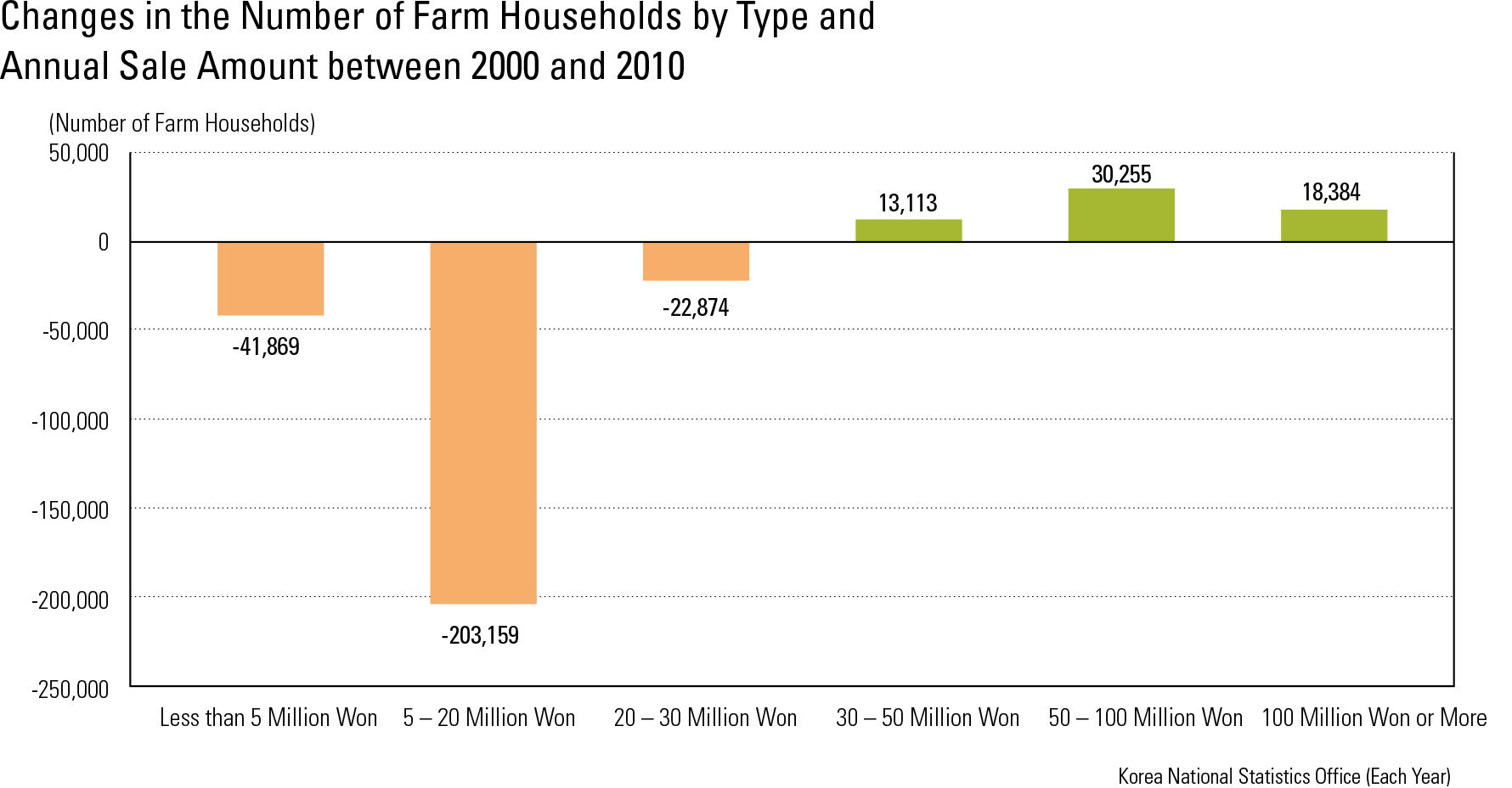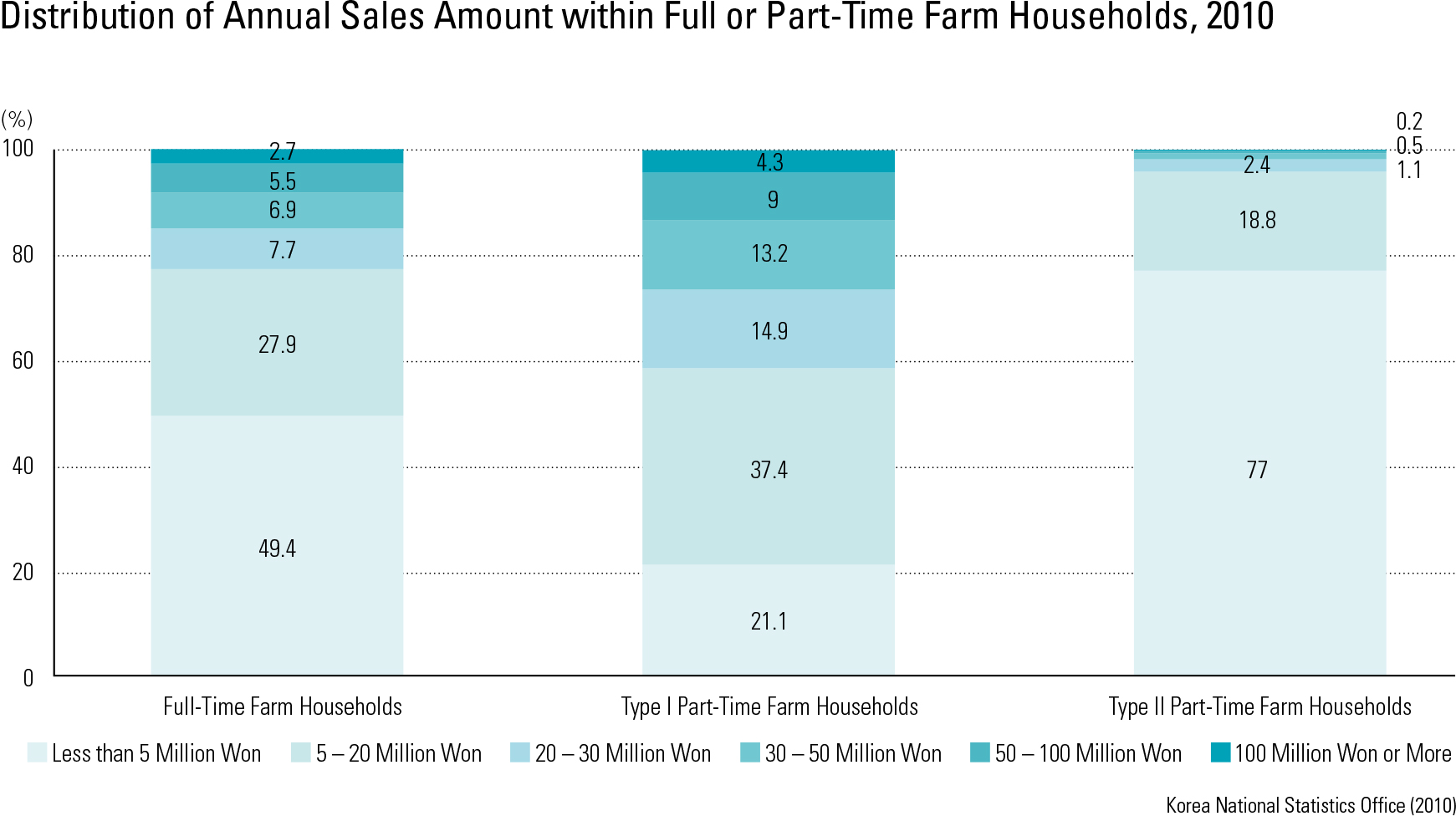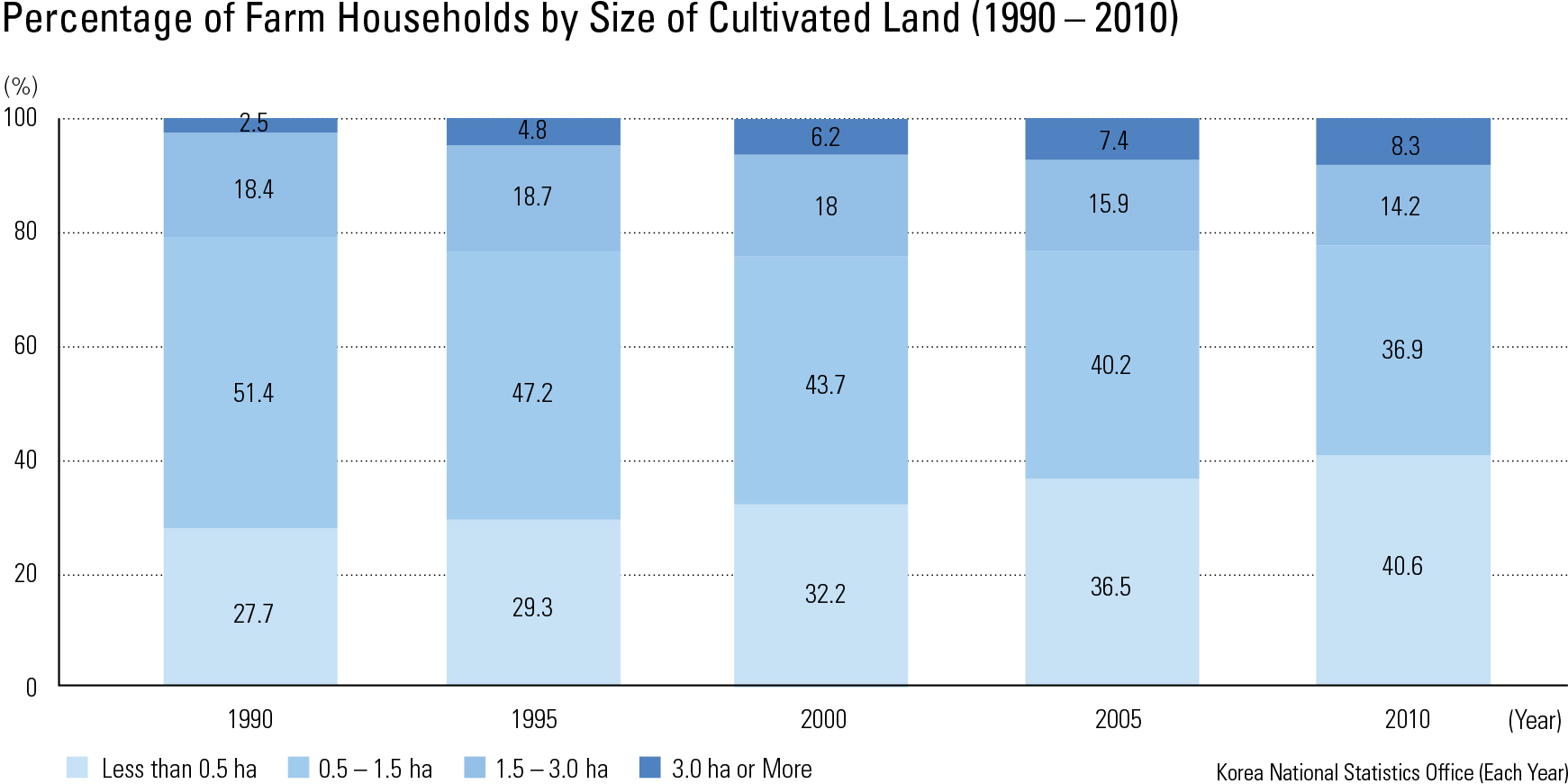English III
Since the 1990s Korea has seen a trend toward polarization of the farm structure, with large-scale commercial farms, as well as petty farms with almost no commercial farm sales income, increas- ing rapidly. For instance, the number of farm households with annual agricultural sales of over 30 million KRW between 2000 and 2010 increased by 6.4%, or by 62,000 households. Over the same time pe- riod, the number of farm households with annual agricultural sales of more than 100 million KRW reached 18,000, an increase of 1.7%. The places (-si, -gun, and -gu) with a higher proportion of large-scale commercial farms were in Gyeong- sangnam-do, Gyeongsangbuk-do, Chungcheong- buk-do, and Gangwon-do, in mostly non-metro- politan areas.On the other hand, farm households with al- most no farm sales also increased to about 34,000 during the same time period. In 2010, the propor- tion of farm households whose sales amounted to less than 5 million KRW accounted for more than half of all farm households. These petty farms were either owned by aging farmers waiting to re- tire or part-time hobby farmers. About half of the farm managers younger than 49 had annual agri- cultural sales incomes of less than 5 million KRW in 2010. They represent the typical hobby farm households. Most petty farm households whose sales amount to less than 5 million KRW tend to be located adjacent to metropolitan areas or along coastal areas.
page_2 |
